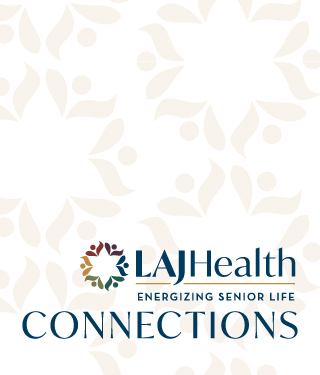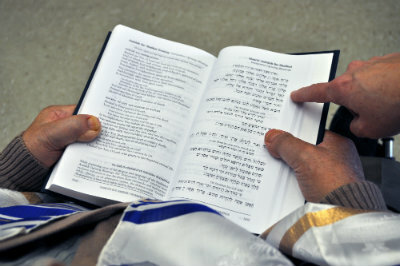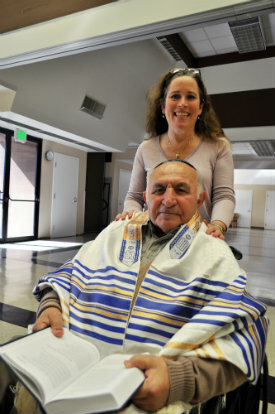New Siddurim for a New Age


New Siddurim for a New Age

The siddurim, or prayer books, at the Los Angeles Jewish Home were worn with over three generations of use, lovingly touched by thousands of hands over the years. Through countless Shabbat and holiday services, the siddurim provided a foundation for seniors and their families to pray, celebrate, and mourn.
Now, through the generosity of supporters of the Jewish Home, the residents have new siddurim, ready to serve them for many years to come. Rabbi Karen Bender, Skirball Director of Spiritual Life, explains how this came to be. “When my predecessor, Rabbi Anthony Elman, began his retirement, he left behind his Rabbi’s discretionary fund. After many discussions about how to best use these funds, we agreed the purchase of new siddurim would benefit our seniors in so many ways.”
And they are more than just new. While the prayer books are Conservative-based, as were the ones they replaced, they offer several important improvements:
Transliteration: Many of our seniors who enjoy coming to services read English only. The most significant parts of the service are now available in transliteration so everyone can participate.
Gender inclusive language: The new siddurim avoids referring to G-d as “Him” and uses more inclusive language, such as referring to our foremothers by name in addition to our forefathers.
Contemporary translations: The prayer books offer accessible, modern and poetic English translations and readings that are very spiritually uplifting.
A great deal of research and effort went into selecting the siddurim. “We were careful to consider the size and weight of the book, as well as font boldness and clarity in both Hebrew and English,” says Rabbi Bender. “As you can imagine, there were many to choose from. I requested input from our seniors and Rabbi Ron Goldberg of the Eisenberg Village campus. In the end, we chose the 2016 printing of Siddur Hadash.”

Fortunately, the discretionary fund was large enough to purchase siddurim for both campuses, which is especially important due to the fluidity of our seniors between campuses.
In honor of Rabbi Elman, who is remembered with great fondness by both Jewish Home seniors and staff, a bookplate was placed in each siddurim, thanking him for his years of services.
“It’s a “Shehecheyanu” moment,” exclaims Rabbi Bender, “a moment of arriving at a special time!”